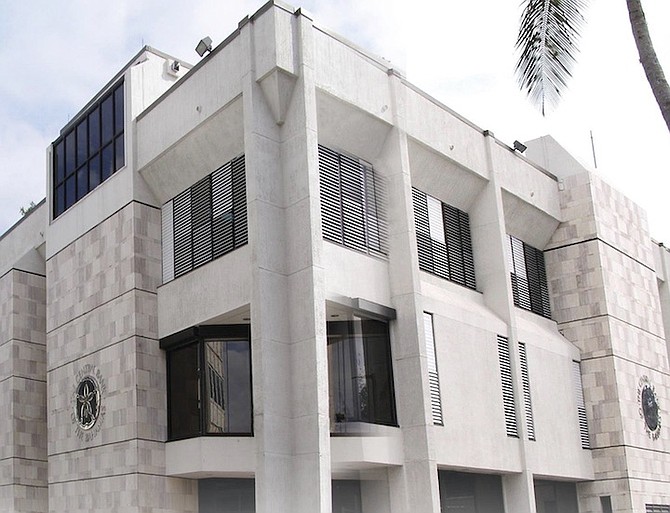By Fay Simmons
Tribune Business Reporter
jsimmons@tribunemedia.net
The Central Bank yesterday said The Bahamas’ external reserves are set to remain “buoyant” in 2023 although June’s growth is $44.4m short of 2022’s expansion.
The regulator’s monthly economic development report maintained that the Bahamian economy will sustain positive growth in 2023, sustained by ongoing gains in the tourism sector. It also warned that the expansion is expected to moderate as indicators return to pre-pandemic levels.
“External reserves grew by $39.8m to $2,737.3m during the review month, although a moderation from the $84.2m expansion in the comparable period of the previous year,” the Central Bank said.
“Contributing to this outturn, the Central Bank’s net purchase from commercial banks widened to $84.7m, from $33.9m in the prior year. Meanwhile, commercial banks net intake from their customers strengthened to $102.9m, from the $23.1m gain last year.
“In contrast, the Central Bank’s transactions with the public sector reversed to a net sale of $45.4m, from a net purchase of $54.8m in 2022.”
The Central Bank predicted that external reserves will remain above international benchmarks this year through foreign currency brought in from tourism.
It said: “External reserve balances are forecasted to remain buoyant in 2023, remaining above international benchmarks, supported by anticipated foreign currency inflows from tourism and other net private sector receipts. Consequently, external balances should remain more than adequate to sustain the Bahamian dollar currency peg.”
“Based on the prevailing outlook, the Central Bank will retain its accommodative policy stance for private sector credit and pursue policies that ensure a favorable outturn for external reserves, and mitigate financial sector disruptions. Further, the Bank will continue to monitor developments within the foreign exchange market, and if necessary, adopt appropriate measures to support a positive outcome for the foreign reserves.”
Foreign currency outflows related to current account transactions increased by $87.9m to $652.4m compared to the same period in 2022. Credit and debit card transactions increased by $88.3m, while outflows for travel-related transactions and non-oil imports grew by $9.4m and by $6.9m, respectively. Factor income remittances were reduced by $13.6m; oil imports, by $1.9m; and transfer payments by $1.3m.
As for the credit quality of the commercial banking system, Central Bank said the quality indicators have improved with a reduction of $14.6m or 2.5 percent in June. As a portion of total outstanding credit, loans in arrears fell by 27 basis points to 10.5 percent of the total.
“A breakdown by the average age of delinquency showed that non performing loans (NPLs) reduced by $20m (5.0percent) to $379.3m, resulting in a 37-basis point narrowing in the attendant ratio to 7 percent,” it added.
The Central Bank reported declines in non-performing mortgages by 44 basis points to 9.2 percent, consumer loans by 39 basis points to 5.3 percent and commercial loans by 13 basis points to 5 percent.
“In contrast, short-term arrears (31-90 days) rose by $5.5m (3 percent) to $185.2m, with the associated ratio moving higher by 10 basis points to 3.4 percent.” the Central Bank continued. “An analysis by loan type revealed that mortgages arrears contracted by $9.2m (2.8 percent) to $346.9m, owing to a reduction in the long-term segment, by $11.4m (4.8 percent), which outstripped the $2.3m (1.9 percent) rise in short-term arrears.
“Similarly, consumer loan delinquencies fell by $7.5m (4.6percent) to $153.9m, due mainly to a $7.6m (6.9 percent) falloff in NPLs, as opposed to the $0.2m (0.3 percent) uptick in the short-term segment. However, commercial delinquencies rose by $2.1m (3.3percent) to $63.7m, as the short-term component increased by $3.1m (25.5 percent), outweighing the $1m (2 percent) decline in the long-term component.
“Against this backdrop, banks reduced their total provisions for loan losses by $17.2m (4.8 percent) to $339.8m in July, with the ratio of total provisions to arrears lowering by 1.5 percentage points to 60.2 percent. However, the ratio of total provisions to NPLs rose by 18 basis points to 89.6 percent. During the month, banks also wrote-off an estimated $24.4m in overdue loans and recovered approximately $4.7m.”





Comments
Use the comment form below to begin a discussion about this content.
Sign in to comment
Or login with:
OpenID